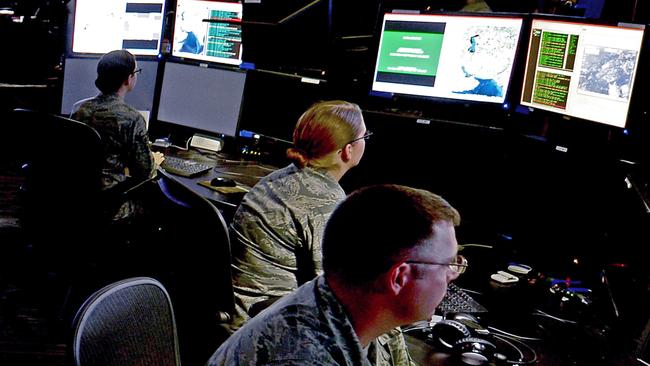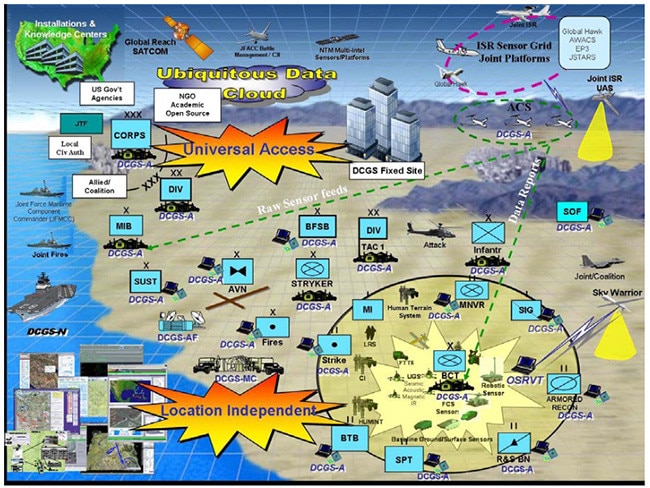US politician says Afghan hospital tragedy due to failure of $5bn defence intelligence system
IT took $5 billion and a decade to develop, but an ultra-advanced US battlefield intelligence computer network was ‘offline’ the day an Afghan hospital was bombed.

A $5 BILLION intelligence network, designed to give commanders battlefield awareness but criticised for years as a flop, was not working in Afghanistan during the recent air attack on a hospital.
According to a member of the US Congress who says he is in touch with military whistleblowers, the Distributed Common Ground System was not functioning when US commanders approved an air strike October 3 that killed 22 staff, patients and others at a Doctors without Borders hospital in Kunduz
It’s a network of computers and sensors designed to knit together disparate strands of intelligence in an easy-to-digest display. Its purpose is to clearly identify and prioritise targets — and avoid unwanted civilian casualties.
It joins a long list of heavily-hyped — and incredibly expensive — hi-tech defence material failing to live up to its marketing, such as the F-35 Stealth Fighter and the US Navy’s latest aircraft carriers.

GROWING DISSENT
“The purpose of DCGS is to enable commanders and service members to ‘see and know’ the battlefield and prevent incidents like the air strike on the hospital in Kunduz,” US Representative Duncan Hunter wrote yesterday to Defense Secretary Ash Carter.
The California Republican, combat veteran and armed services committee member who has been a persistent DCGS critic.
“Senior Army leaders have gone to extraordinary lengths in recent years to deny evidence of the failures of the DCGS program, and I am asking for your help to prevent them from doing so following this tragic incident,” he wrote.
Pentagon spokesman Peter Cook said he could not comment on the Hunter letter because he had not yet seen it.
“We have confidence the ongoing investigations into this tragic incident will uncover what happened and why this hospital was mistakenly struck,” he added. “As appropriate, the Department of Defense will apply any lessons learned from the investigations to try and ensure incidents like this do not happen again.”

LOSS OF INTELLIGENCE
It’s unclear whether the breakdown of key DCGS systems contributed to the decision to approve the air attack, which Pentagon officials say was a mistake. But the coordinates of the hospital were entered into an intelligence database that is part of the DCGS intelligence network, according to a US official who would not be quoted because he was not authorised to discuss the matter.
The Army over the years has touted DCGS as having “saved lives” with its ability to fuse together various intelligence sources, including drone footage, mapping software, human source reports, social media and eavesdropping transcripts. But independent Army testers repeatedly have questioned the system’s effectiveness. One testing report in 2012 said it was “not survivable,” meaning it was at risk of failing in combat.
Among the elements of DCGS that were not working, service members told Hunter, were the intelligence fusion server, which is supposed to allow seamless information sharing across various Army elements, and the cloud, which is supposed to offer connectivity to units in the field.

TRAGIC CONSEQUENCES
President Barack Obama apologised for the air attack to Dr. Joanne Liu, the international president of Doctors without Borders, who has called for an independent international investigation. US, NATO and Afghan investigations are looking into the matter. The US has offered to compensate the families of those killed and injured.
Pentagon officials have said the military did not intentionally target the hospital, but they have not explained why the Army analysts who knew it was a medical facility were not able to convey that intelligence to commanders who approved the air strike.
The Associated Press has reported that special operations intelligence analysts knew the Doctors without Borders facility was a hospital, and were circulating intelligence reports about possible enemy activity at the site.
Some of those analysts were using a commercial software system made by Palantir, a Silicon Valley company that competes with DCGS, according to an Army official who would not be quoted because he was not authorised to speak publicly.



